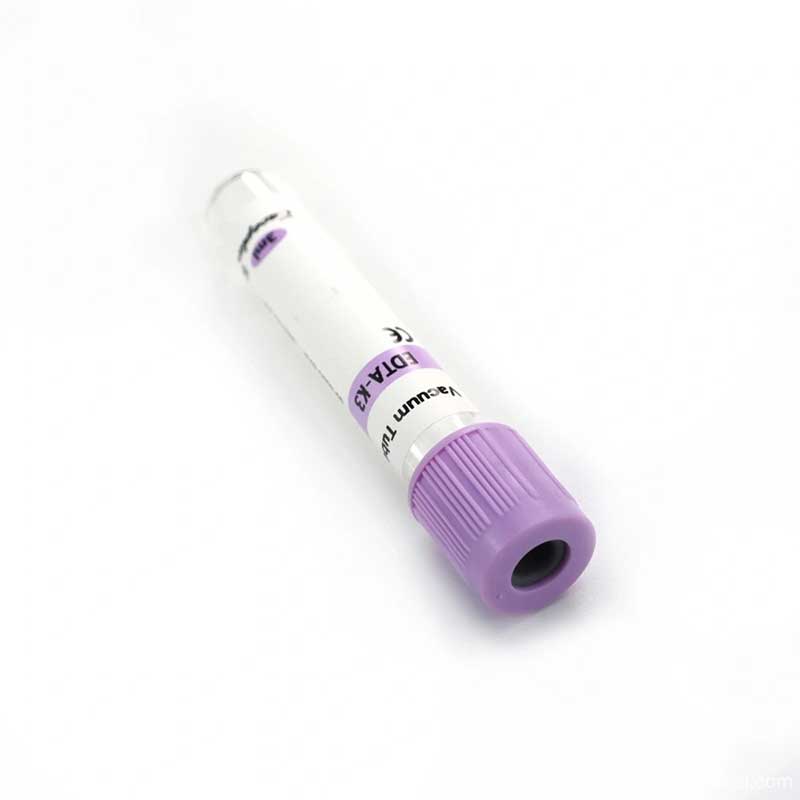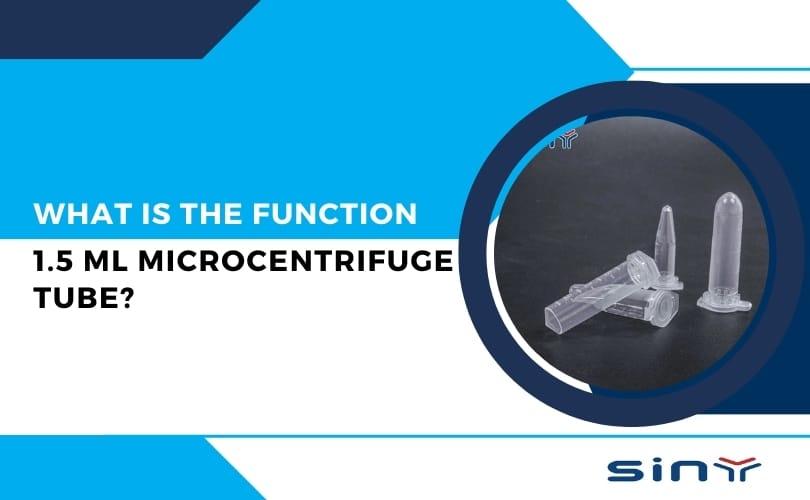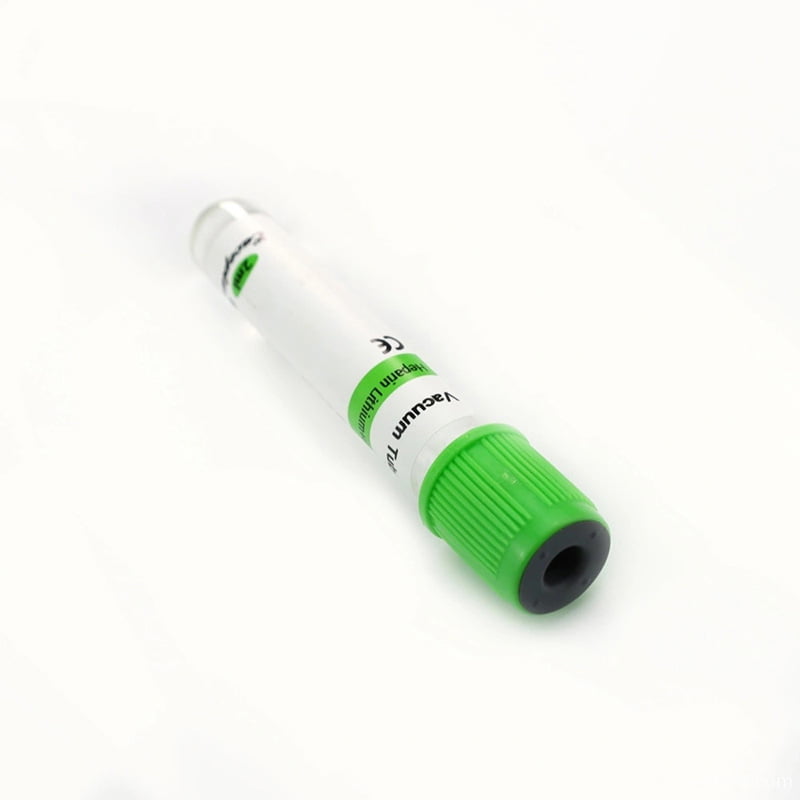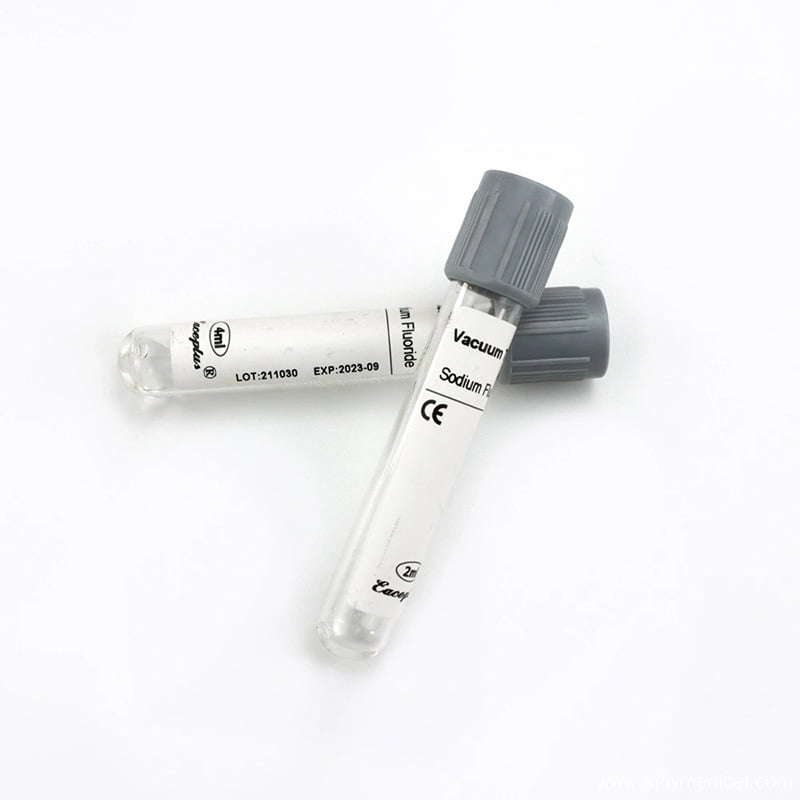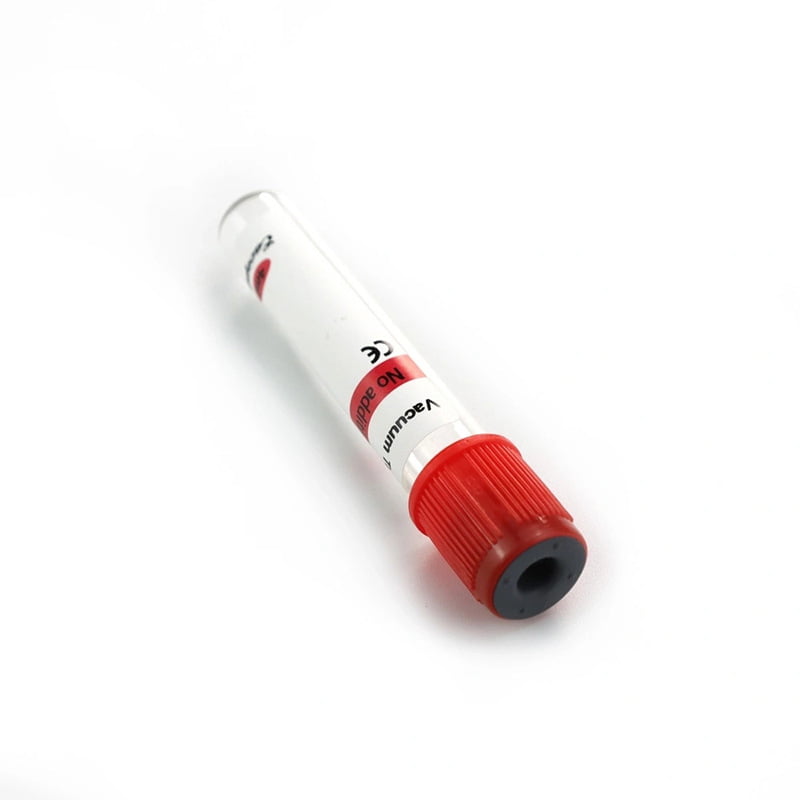Heparin is an anticoagulant that prevents blood clotting by inhibiting the clotting factors. Therefore, when using Heparin blood collection tubes, handling them carefully is essential to avoid contamination. Additionally, it’s important to label the tubes accurately to ensure proper identification of the collected blood samples.
Table of Contents
- 1 Introduction to Heparin Blood Collection Tubes
- 2 What is a Heparin Blood Tube?
- 3 What is a Sodium Heparin Tubes?
- 4 How do heparin blood collection tubes work?
- 5 The Significance of Accurate Blood Tests
- 6 Common types of blood tests that require heparin tubes
- 7 Advantages of using heparin blood collection tubes
- 8 Storage of Heparin Tubes
- 9 Potential risks and precautions when using heparin tubes
- 10 Final Thoughts: Heparin Blood Collection Tubes
- 11 FAQs: Heparin Blood Collection Tubes
Introduction to Heparin Blood Collection Tubes
Heparin blood collection tubes are fundamental tools used in the medical field for collecting and preserving blood samples. They contain heparin, a natural anticoagulant that prevents blood clotting by inhibiting the coagulation cascade. This characteristic makes heparin tubes indispensable in obtaining high-quality plasma specimens for various laboratory analyses.
What is a Heparin Blood Tube?
A heparin blood tube collects plasma or whole blood for special tests involving clinical chemistry, immunology, and microbiological serology. Heparin is a blood thinner and anticoagulant that stops blood clots from forming. The body can avoid deep vein thrombosis, pulmonary embolism, and arterial thromboembolism by taking heparin.
Due to its little interference with water, heparin is a suitable anticoagulant for chemical measurement and biochemistry testing. It is the preferred anticoagulant for detecting blood gases, electrolytes, pH, and ionized calcium.
| Product Name | Heparin Blood Tube |
| Material | 100% Wood Pulp |
| Paper Type | Thermal Paper |
| OEM/ODM | Yes |
| Certificate | CE, ISO13485, ISO9001 |
| Usage | Medical |
| Package | Customizable |
| Sample | Contact Us |
| Service | The groups we serve are: distributors, import traders, government procurement, buying agents, and medical chain stores. we provide one-stop procurement for you to simplify your procurement process |
What is a Sodium Heparin Tubes?
Sodium heparin is a salt of heparin, as was mentioned in the preceding section. An ionizable medication and a counter-ion combine to form a neutral substance known as a salt. For example, in NaCl, or common table salt, the ion is Na+, and the counter-ion is Cl-. Table salt is created when the positively charged sodium ion is combined with the negatively charged chloride ion.

Heparin is the ionizable medication in the sodium heparin instance, while Na+ is the counter-ion. Hence, sodium heparin is produced when the positively charged sodium ion and the negatively charged heparin molecule interact.
How do heparin blood collection tubes work?
Heparin, a natural anticoagulant, is used in these tubes to prevent blood clotting during collection. By inhibiting the clotting cascade, heparin allows for smoother blood flow and maintains the integrity of the collected sample. This is especially critical when testing for various medical conditions and monitoring patients’ health.

Anticoagulant Mechanism
Lithium Heparin blood collection tubes utilize heparin, a natural anticoagulant, to prevent blood clotting. Heparin inhibits clotting factors such as thrombin, ensuring the blood remains liquid for accurate analysis.
Activation Upon Contact
Upon blood entry, the heparin coating within the tubes activates, initiating its anticoagulant action. This activation prevents the initiation of the clotting process, maintaining sample integrity.
Preserving Sample Integrity
By inhibiting clot formation, heparin ensures the collected blood sample retains its cellular and biochemical composition, which is vital for accurate laboratory analysis.
Compatibility and Variants
Heparin tubes come in various types, including lithium and sodium heparin variants. These options cater to diverse testing needs and laboratory protocols, ensuring compatibility with analytical methodologies.
The Significance of Accurate Blood Tests
Accurate blood tests are vital for diagnosing medical conditions, monitoring disease progression, and evaluating treatment effectiveness. They provide healthcare professionals valuable insights into a patient’s health status, allowing for timely interventions and appropriate medical decisions.
Diagnostic Precision
Accurate blood tests are paramount for precise diagnosis, guiding healthcare professionals in identifying medical conditions and designing appropriate treatment plans based on reliable test results.
Disease Monitoring
Blood tests are vital in monitoring disease progression, allowing healthcare providers to track patient health status changes and adjust treatment strategies accordingly for optimal outcomes.
Treatment Evaluation
Accurate blood tests enable healthcare professionals to assess the effectiveness of treatments, ensuring that interventions yield the desired results and making necessary adjustments to optimize patient care.
Timely Interventions
Prompt and accurate blood test results facilitate timely interventions, enabling healthcare providers to initiate appropriate treatments promptly and mitigate potential health risks for patients.
Common types of blood tests that require heparin tubes
Heparin blood collection tubes are used in a wide range of blood tests, especially those that require plasma separation. Plasma, the liquid portion of the blood, contains various components, including proteins, electrolytes, and hormones, that are essential for accurate analysis. Without proper anticoagulation, the blood may clot, making precise analysis impossible.

Some common types of blood tests that require heparin tubes include:
1. Coagulation tests: These tests measure the blood’s ability to clot and are essential for diagnosing bleeding disorders, monitoring anticoagulant therapy, and assessing the risk of developing blood clots.
2. Chemistry tests: These tests analyze the levels of various substances in the blood, such as glucose, cholesterol, liver enzymes, and electrolytes. Accurate measurements are crucial for diagnosing diabetes, liver disease, and electrolyte imbalances.
3. Hematology tests evaluate blood components, such as red blood cells, white blood cells, and platelets. Accurate measurements are essential for diagnosing blood disorders and infections and assessing overall health.
4. Immunology tests measure the presence and levels of antibodies, antigens, and other immune system components in the blood. Accurate results are vital for diagnosing autoimmune diseases and allergies and monitoring immune responses to infections or vaccines.
Heparin tubes ensure that the collected blood remains in a liquid state, allowing for precise separation of plasma from other blood components. This separation facilitates accurate analysis and reduces the risk of test interference due to blood clotting.
Advantages of using heparin blood collection tubes
Heparin treatment for blood collection offers several advantages over other types of blood collection tubes. These advantages contribute to the accuracy and reliability of blood test results, ultimately benefiting patient care. Here are some key advantages of using heparin tubes:
Prevents blood clotting
Heparin’s anticoagulant properties prevent blood from clotting, ensuring the collected sample remains liquid. This is crucial for accurate analysis, especially in plasma separation tests.
Maintains sample integrity
By inhibiting clotting, heparin tubes maintain the integrity of the collected sample. This ensures that the blood components remain stable until they can be analyzed in the laboratory, reducing the risk of sample degradation and inaccurate results.
It enables multiple tests from a single sample.
Heparin tubes allow for the collection of sufficient blood volume, which can be used for multiple tests. This eliminates the need for additional blood draws and minimizes discomfort for the patient.
Compatible with automated laboratory equipment
Heparin tubes are widely used in laboratories and are compatible with automated sample analysis equipment. This allows for efficient processing and reduces the risk of errors associated with manual handling.
Suitable for a wide range of blood tests
Heparin tubes are versatile and can be used for various blood tests, including coagulation, chemistry, hematology, and immunology tests. This makes them a preferred choice in many healthcare settings.
The advantages of heparin blood collection tubes make them essential for accurate blood testing. Their use ensures reliable results, enabling healthcare professionals to make informed decisions about patient care
Storage of Heparin Tubes
Proper handling and storage of heparin blood collection tubes are crucial to maintain their efficacy and ensure accurate blood test results. Here are some important guidelines to follow:
- Check for Expiry Dates: Always verify the expiration date on the heparin tube before use. Expired tubes may not provide the necessary anticoagulant effect, leading to inaccurate results.
- Inspect for Damage: Visually inspect the heparin tube for cracks, leaks, or other signs of damage before use. Damaged tubes should be discarded as they may compromise sample integrity.
- Store at Recommended Temperatures: Heparin tubes should be stored at the temperature recommended by the manufacturer. Improper storage can affect the anticoagulant properties of the tube, resulting in inaccurate results.
- Mix the Blood and Heparin: After collection, gently invert the heparin tube several times to ensure proper mixing of the blood with the anticoagulant. This step prevents clotting and ensures a homogenous sample.
- Label the Tube: Accurate labeling of the heparin tube is essential to prevent mix-ups and ensure proper sample identification during analysis. Include the patient’s name, date, and any other required information.
Potential risks and precautions when using heparin tubes
Although heparin blood collection tubes are generally safe and widely used, there are some potential risks and precautions to be aware of. These include:
1. Heparin-induced thrombocytopenia (HIT): In rare cases, heparin can cause an immune response that leads to a decrease in platelet count, known as heparin-induced thrombocytopenia. This condition can increase the risk of blood clot formation.
2. Interference with certain assays: Some tests may be affected by the presence of heparin in the sample. It is important to consult the laboratory’s guidelines and protocols to ensure appropriate test selection and interpretation.
3. Proper dosage: The amount of heparin in the tube should be appropriate for the required blood volume. Too much or too little heparin can affect the anticoagulant effect, leading to inaccurate results.
4. Patient allergies: Some individuals may have allergies or sensitivities to heparin. It is important to be aware of any known allergies or adverse reactions to heparin and use alternative collection tubes if necessary.
By being aware of these potential risks and taking the necessary precautions, healthcare professionals can mitigate any adverse effects and ensure the accurate interpretation of blood test results.
Final Thoughts: Heparin Blood Collection Tubes
Heparin blood collection tubes are vital in ensuring accurate blood test results. By preventing clotting and preserving the integrity of the blood sample, these tubes contribute to the reliability and precision of the tests. In healthcare settings, where accurate diagnoses and treatment plans are paramount, heparin tubes are essential.
Whether in laboratories, hospitals, or clinics, heparin blood collection tubes are widely used for various blood tests. Their ability to maintain stability during transportation and storage, facilitate plasma separation, and provide quick and accurate results makes them an indispensable tool in modern healthcare.
FAQs: Heparin Blood Collection Tubes
What blood tube is used for heparin?
Heparin blood collection tubes are specifically designed for use with heparin as an anticoagulant. These tubes contain a predetermined amount of heparin, usually a gel or powder coating, which prevents blood clotting during collection.
Should I use EDTA or a heparin tube?
The choice between EDTA (ethylenediaminetetraacetic acid) and heparin tubes depends on the type of blood test being conducted. EDTA tubes are typically used for tests requiring whole blood specimens, such as complete blood counts (CBCs) and blood smears. On the other hand, heparin tubes are used when plasma is needed for analysis, as heparin prevents blood clotting, allowing for plasma separation.
How do you prepare heparin solution for blood collection?
Heparin solution for blood collection is typically provided in pre-packaged tubes by manufacturers. These tubes come pre-coated with a heparin layer, activated upon contact with the blood. There is no need for additional preparation of the heparin solution before blood collection.
What size tube is for sodium heparin?
Sodium heparin tubes are available in various sizes based on the blood required for testing. Common sizes include 3 mL, 5 mL, and 10 mL tubes.

